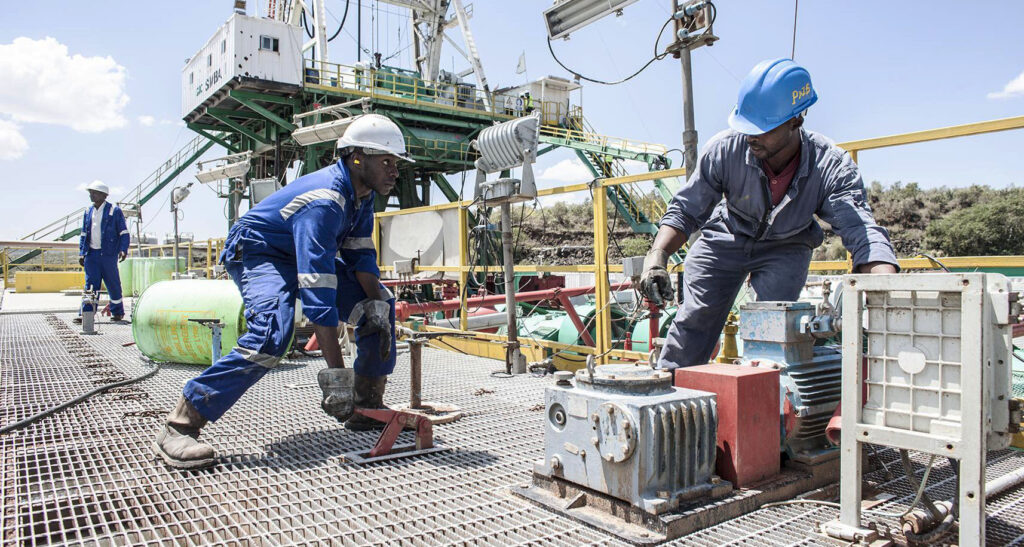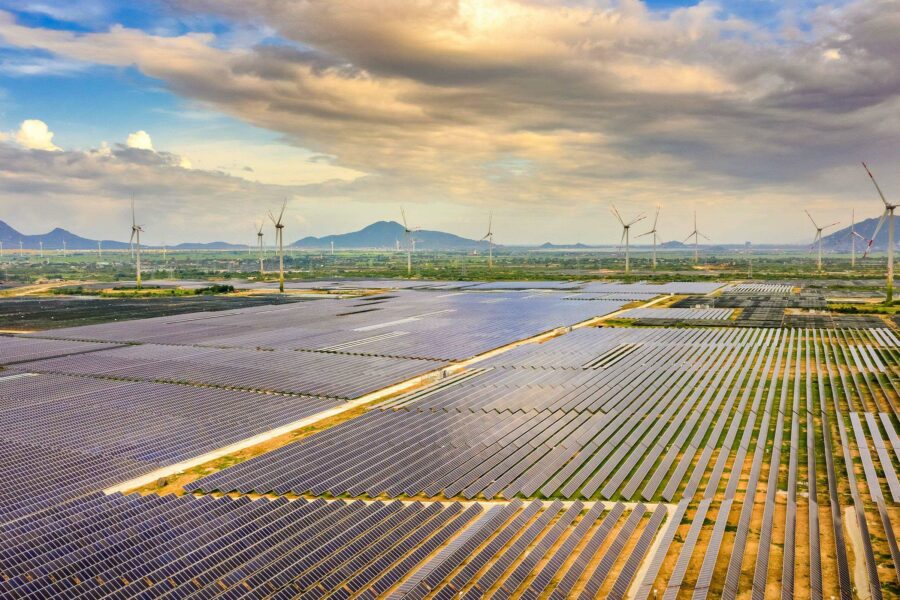Weaning the world off fossil fuels
What is holding up progress on the transition to carbon neutrality, and what must we do to speed it up?
Energy — Middle East and Northern Africa, Sub-Saharan Africa

Planning for a non-fossil-fuel future is not without its disruptions. The challenge resides not in what needs to be done, but on how to arrive at climate neutrality. The complexity in the direction of travel toward carbon neutrality is that the latter remains a contested term, and how it is interpreted and operationalized from region to region differs. There is also the fact that there are different responsibilities for climate change and that the pathway to a green recovery will be uneven. This, and the speed of travel, are helping complicate a decarbonization process that is weighed down before it sets off.
The world is adjusting to the economic turbulence that has decimated economies. It is clear that COVID-19 and its recovery might prove to be a formidable ‘rival’ to the green recovery. This is especially the case for countries that rely on hydrocarbon resources as a vital stream of funding to support strategic Sustainable Development Goals (SDGs) such as education and health. Consequently, the green recovery will have to compete with countries’ efforts to rebuild and reboot their health systems and infrastructure. The context is not neutral: we are focusing on hydrocarbon-rich countries in Africa, many of which rely on revenue from oil and gas extraction and commercialization.
Ratcheting up the ambition in green initiatives
The disruption caused by COVID-19 could result in Africa’s economy contracting by some 2.6%, or a loss of gross domestic product (GDP) of $120 billion. An estimated 25 to 30 million job losses are anticipated in both the formal and informal sectors. This economic fallout is being played out at a time of extreme vulnerability, when parts of the region are being assaulted by locust invasions against a backdrop of low crop yields and shortages of staple foodstuffs.
The pandemic has resulted in falling GDPs across the world in small and large economies alike. We witnessed a drop of 50% to 85% in oil prices in just one year. In addition, planned production of new oil discoveries has had to be put on the back burner as countries cut back on new investment plans. Consequently, the pandemic has not only ‘choked off’ the vigor that economies in the North displayed before the crisis, it has also left hydrocarbon-based economies in Africa on their knees. There is a sense that the massive deployment of renewables could be delayed in countries where energy poverty is rife due to competition for funding on other strategic sectors. Yet there is still a sense that, if leaders do not make a pre-emptive strike now and absorb the lessons from the exogenous shocks incurred by the crisis, then the opportunities for a managed transition could be lost.
Nonetheless, there are some valuable indicators of progress towards green development. For example, under a favorable tax system, the government in Kenya increased energy access from 25% of the population in 2013 to 75% in 2018. In addition, we have seen an increase in the uptake of decentralized solutions, such as solar systems, which continue to have a transformational impact on the lives of millions across Africa. But are these indicators enough to create the ripple effect of a world without fossil fuels?
Parallel journeys towards decarbonization
Countries across the world are recording steady progress in achieving carbon-neutral economies. Renewable options continue to grow as countries continue to assert energy autonomy and expand non-grid solutions. However, even with the falling costs of renewables and the meteoric expansion of digital innovations, the road to carbon neutrality is not without its challenges. For centuries, we have become fixated with fossil fuel-powered economies. This is an addiction that might need a whole set of tools and a radically new approach to fix if our compulsion to overconsume natural resources is to be curbed.
Currently, leaders and their constituents are debating accelerating energy transitions. However, while the transition will differ in terms of orientation, speed, capacity, and autonomy, what might remain invariable is the need for new climate-resilient economies. In the case of Africa, it makes perfect sense for leaders and people alike to be faced with this wrenching contrast between development and environmental sustainability.
The continent’s population will reach 2.5 billion by 2050. This calls for an urgent, pre-emptive response to deal comprehensively with rapid urbanization, massive degradation, and deforestation, as well as a range of energy-inefficient options that will rob the continent of its industrialization potential and slow down growth. Meanwhile, a twin phenomenon is being played out. Global agricultural exports have been declining for the past 40 years, while food imports have registered a worrying increase. From 2016 to 2018, Africa imported $35 billion of food per year; UNCTAD projects that figure to rise to $110 billion by 2025.
Africa’s economic growth model is largely reliant on land-based extraction. The majority of people feed directly off land resources and are dependent on the land for their economic livelihoods. Similarly, the land is where the bulk of Africa’s emissions come from, especially given deforestation, slash-and-burn practices and commercial agriculture. Hence, there is a growing priority for the region to optimize its land resources and to adopt land-based adaptation and mitigation strategies that will enable the sequestering of carbon, promote climate-smart mitigation, and reduce agricultural and other widespread deforestation.
If the land is a prime sector for mitigation and adaptation, energy systems are perceived as a driver for deploying renewable options and divesting from fossil fuels. It is true that poor access to energy limits growth and reduces the potential of certain social groups, particularly women and young girls. The stark contradiction is that Africa is abundantly rich in renewable energy options, but lacks the infrastructural power and capabilities to extend access widely.
However, while there are strong arguments for why green transitions make sense in Africa, not least to power growth, enable smart cities, and create green jobs, the truth is that many African countries do not see fossil-fuel use as problematic for sustainable development. Instead, their industrialization plans incorporate several energy options as part of the menu.
Oil and gas-rich countries in Africa are facing at least a temporary stranding of assets due to the collapse in oil prices, among other factors. UNU-INRA’s recent study of stranded assets warns of an impending future where hydrocarbon resources in Africa will remain in the ground, depreciated, and devalued. Worryingly, many countries in Africa are intent on accelerating their returns from fossil fuels while they still can, as can be seen in plans for a 1,440-kilometer, crude-oil pipeline from Uganda to Tanzania and the new drilling project’s in Namibia’s fragile biodiverse hotspot, the Kavango basin. However, they are not alone, as the pattern has already been set by Europe and the US, where the appetite for natural gas is still growing. Indeed, according to Investigate Europe, current planned investments in natural gas infrastructure are estimated at €104 billion. Hailed as a bridging fuel, many with vested interests in Africa and beyond see gas as an important alternative, despite security and safety concerns.
Just transitions
Hence, although the call for a 1.5°C world will necessitate a radical transformation, much of what is being done at present by individual countries and regional groupings does not scratch the surface of the deep structural changes that are required consistently and collectively. However, a justice-based transition must get the transitional imperatives right. We, as humankind, can tinker with innovative ways to fulfill the Paris Agreement so as to arrive at safe growth, but the tinkering cannot sacrifice justice for rapid mitigation at all costs. The task of meeting the Paris Agreement and staying within the 1.5°C temperature threshold has implications for equality. Speeding up the transition is an inherent function of power and capacity: instead, the urgency should be weighed against those who can travel in the fast lane towards climate neutrality and enable poorer countries to muddle through innovative ways of managing a transition away from fossil fuels.
The notion of a just transition is often seen as an outcome of heavy fossil-fuel industries and the job losses and safety nets they will incur. However, a ‘just transition’ is both process and outcome-based, requiring institutions, structures and practices to be identified that reproduce climate injustice and expose poorer nations to a starker set of harder choices than those mature economies are able to make. Many countries in Africa are now contending with an economic downturn and are struggling to revitalize economies that are already saddled with debt and poor terms of trade. The opportunity to bring forward the green transition and wean humanity off its addiction to fossil fuels is not an unattainable prospect: it can be seized, but getting it right and making it fair to those on the periphery of development will mean making deliberate attempts to ensure that the rest of the carbon budget is not eaten into by those who can eat it. Rather, the carbon budget should become a space protected by those for whom environmental sustainability is a prized asset, both for today and for future generations.
The road to carbon neutrality has new prospects for rapid African-led urbanization, leading to an Africa that is keen to get even with an industrialization process that has hitherto proved elusive. However, this trajectory will require support from developed countries to ensure that the mitigation burden is not offloaded on to poorer countries that are already paying for climate change externalities. Instead, the relevant climate finance needed, and the associated infrastructure, technology, and skills, should be frontloaded to ‘ramp up’ trust and build effective burden-sharing coalitions. COVID-19 is a stark reminder that the metaphor of the fork in a road, with its suggestion that there are choices, is changing. Instead, what we might observe is the road to carbon neutrality ending up becoming a cul de sac if we do not find the transitional tools that can enable us to make bold moves along two inseparable tracks: climate justice and the green recovery.




